Dog
How to know the chip number of a dog?
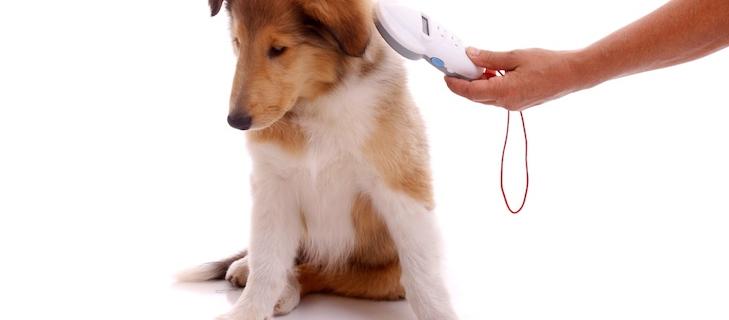
It has no side effects or reaction; sometimes it hurts a little when inoculated subcutaneously and the animal may complain, but nothing more.
Depending on the dog, owner or veterinarian, you can get the chip in different visits:
- On the first visit , before any vaccine.
- In the middle of the vaccination protocol or at the end of it.
- The same day as the rabies vaccine, at the end of the puppy protocol.
This device contains a series of numbers inside , no two will be the same, (it’s like the dog’s ID number ) that will appear when a reader passes through the microchip implantation area (that is, through the neck).
We can also see the chip number on the dog’s card or passport on the first pages, with a sticker in the form of a barcode or numbers by hand. The veterinarian will take care of it, to confirm that this card or passport is associated with a chip number and therefore with a dog.
microchip data
When the veterinarian installs a microchip, they must associate these numbers with owner data , such as:
- Name of the owner: will be the legal responsible for the dog.
- Direction.
- Telephone.
- DNI.
In addition, dog data will also appear :
- Name.
- Age.
- Sex.
- Race.
- If it is a companion, hunting, guard, Potentially Dangerous Dog (PPP).
- Number of card or passport.
These data are immediately registered by the veterinarian in the database of the Autonomous Community of origin, for example: Community of Madrid, Castilla y León, Galicia…etc. If the dog gets lost, the reader will be passed around the neck (a veterinarian can do it, or even sometimes, the local police have readers, also the Civil Guard, etc.) and through this number they will be able to contact the owner.
Depending on the Autonomous Community, many of them send the owner a card , DNI size, with details of the owner, the owner and the veterinarian who put the microchip.
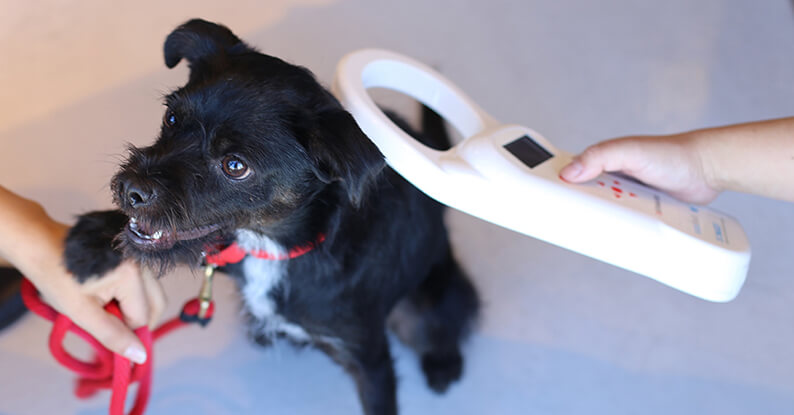
Databases
The microchip data depends on each Autonomous Community, but at a national level there is the REIAC, it is the Spanish Network for the Identification of Companion Animals.
When entering this web page, on the main screen, anyone can access it, even if they are not a veterinarian. By entering the microchip number, it will tell us which is the source database, the telephone number and the email. The owner’s data will not appear for privacy, but this may help us in some cases when contacting the source database.
If a dog changes its Autonomous Community, it must change the database. The number and the owner will remain, but it will be necessary to request removal from the original database to be able to register it in the new one (this management will be carried out by the veterinarian), but it is important to take this into account if we move house.
For this reason, it is so important to know our pet well and to have a trusted veterinarian who can advise us in the most convenient way, as is the case with MAPFRE Pet Insurance, which offers the best professionals, in addition to many other advantages.
What is it for?
The microchip is mandatory depending on the Communities depending on the pet; for example, in the Community of Madrid it is mandatory from 3 months in dogs and cats. In addition, dogs must have a microchip implanted to be able to vaccinate them against rabies, otherwise they will not be able to do so, it is a fundamental condition.
Apart from the legal issue, the microchip is used to:
- Find lost animals or animals that have escaped when frightened.
- Prevent theft : when a dog is lost and the owner reports it, in the database, its status changes to: MISSING, on date X. If a veterinarian checks a chip and notices that the dog marks missing, he will trigger the alarms.
- Avoid abandonment: if an owner is aware of the responsibility that it entails and abandons a dog, the veterinarian or the appropriate bodies may initiate legal proceedings against him for animal abandonment.
Should I put it on?
Yes, it is always the most recommended . A microchip does not cost more than 50 euros and the benefits make the difference of being able to reunite with your dog or cat or not in case of loss or theft of the animal.
In the shelters there are many cats that surely had a house and an owner, but since they do not have a microchip implanted, the successes of finding your dog are nil.
Dog
Wheelchairs for Dogs Enhancing Mobility and Quality of Life
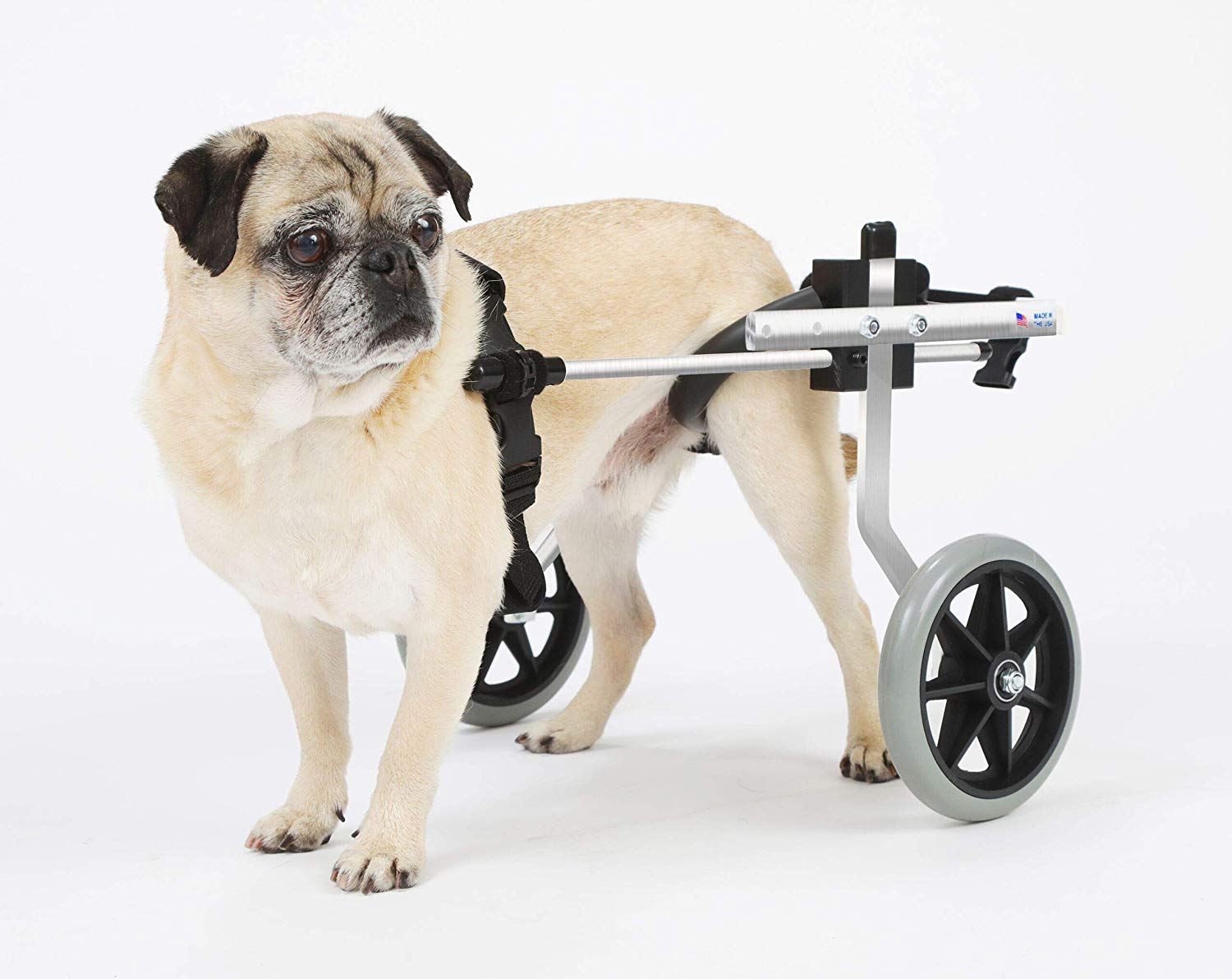
For many pet owners, dogs are more than just animals they’re cherished companions who bring immense joy and companionship. Unfortunately, some dogs experience mobility challenges due to injuries, illnesses, or congenital conditions that affect their ability to walk or run. Fortunately, technological advancements and innovative solutions have paved the way for the creation of specialized wheelchairs designed specifically for dogs. These devices play a crucial role in improving the mobility and overall quality of life for these beloved pets.
Understanding the Need for Dog Wheelchairs
Dogs can encounter mobility issues due to various reasons, including spinal injuries, degenerative diseases, neurological disorders, and limb amputations. Such conditions can severely limit a dog’s movement and impact their independence. Wheelchairs for dogs provide essential support by assisting in weight-bearing, enabling them to move freely, exercise, and engage in regular activities without excessive strain or discomfort.
Design and Functionality of Dog Wheelchairs
Dog wheelchairs are custom-built devices tailored to fit the unique anatomy and size of different dog breed. These wheelchairs typically consist of a frame, wheels, straps or harnesses, and padding for comfort. The design varies based on the dog’s needs rear support for hind limb weakness, front support for forelimb disabilities, or full-body support for dogs with more complex conditions.
Most wheelchairs are adjustable, allowing for modifications as the dog’s condition progresses or changes. They’re lightweight and crafted from durable materials to ensure ease of movement and durability. Some models even come with accessories such as all-terrain wheels for outdoor adventures or additional support for stability.
Benefits of Using Wheelchairs for Dogs
The advantages of dog wheelchairs are manifold. Primarily, these devices restore mobility and independence, enabling dogs to move around freely, exercise, and participate in activities they previously enjoyed. Enhanced mobility helps prevent muscle atrophy, maintains joint flexibility, and contributes to better overall health.
Additionally, wheelchairs can improve a dog’s mental well-being by reducing frustration and anxiety associated with limited movement. It fosters a sense of normalcy and allows them to remain an active part of their family’s life. Moreover, dog wheelchairs can alleviate the burden on pet owners, making it easier to care for their disabled pets and reducing the risk of caretaker burnout.
Adoption and Adaptation to Dog Wheelchairs
Introducing a dog to a wheelchair requires patience and positive reinforcement. Initially, some dogs may be hesitant or uncomfortable with the device. Training and gradual introduction play a crucial role in helping them adapt. Encouraging them with treats, short sessions, and gentle guidance can help dogs become accustomed to the wheelchair.
It’s essential to monitor the dog’s comfort and make necessary adjustments to ensure the wheelchair fits properly without causing any discomfort or chafing. Regular checks and proper maintenance are vital to ensure the wheelchair remains functional and comfortable for the dog.
Impact on the Pet-Owner Relationship
The use of wheelchairs can deepen the bond between pets and their owners. Owners often witness their dog’s determination and resilience, strengthening their emotional connection. Furthermore, the satisfaction derived from witnessing their pet’s improved quality of life reinforces the sense of companionship and care.
Conclusion
Wheelchairs for dogs are invaluable tools that significantly improve the lives of disabled or mobility-impaired pets. These devices not only restore freedom of movement but also contribute to the overall well-being and happiness of the dog. The advancements in veterinary medicine and technology continue to drive innovation in creating more tailored and effective solutions, providing hope and support for dogs and their loving owners.
Through these wheelchairs, dogs can continue to enjoy a fulfilling life, filled with love, play, and companionship, reaffirming the timeless bond between humans and their furry companions.
Dog
Understanding Dog Constipation
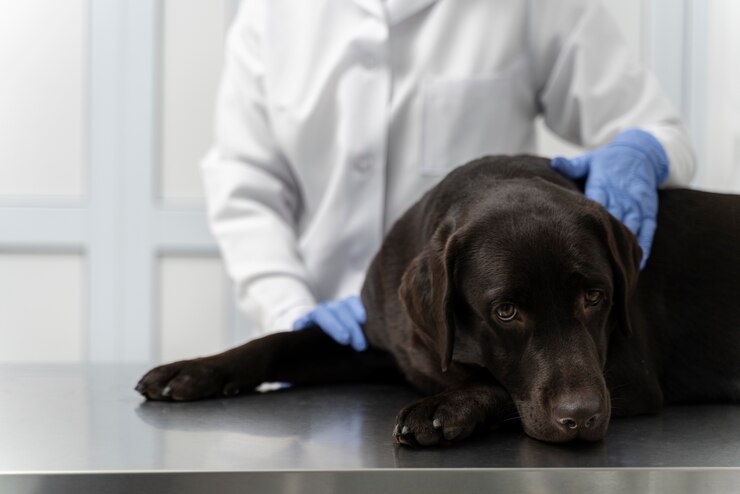
Dogs are cherished friends that are renowned for their lively nature and unwavering devotion. But just like people, dogs can have health problems, and constipation is a typical ailment that they face. It’s critical for responsible pet owners to be aware of the warning symptoms, comprehend the underlying causes, and understand how to treat and avoid constipation in dogs.
What Is Constipation in Dogs?
Constipation in dogs is the inability to easily pass stool due to irregular or difficult bowel motions. Dogs typically urinate once or more times a day, according to their age, diet, and general health. Constipation in dogs results in firm, dry stools that are difficult to pass, which can be uncomfortable and possibly lead to health issues.
Dog constipation causes:
Dog constipation can be caused by a number of things, such as:
- Dietary Problems: Constipation may result from abrupt dietary changes or inadequate fiber consumption. Low-fiber diets might cause firmer, more difficult-to-pass stools.
- Dehydration: Drinking too little water can make the body absorb additional moisture from the feces, which makes it harder to pass and dry.
- Absence of Exercise: Getting regular exercise encourages bowel movements. Dogs that lead sedentary lives may be more prone to constipation.
- Obstructions: Eating non-digestible materials such as hair, bones, or foreign objects can clog the digestive track and cause constipation.
- Underlying Medical Conditions: Disorders such enlarged prostates, anal gland disorders, neurological diseases, or digestive system cancers can cause
Symptoms of Dog Constipation:
Identifying constipation symptoms in dogs is crucial for early intervention. Look out for the following signs:
- Straining: Continuous attempts to defecate with little or no results is a telltale sign of constipation.
- Dry, Hard Stool: Stools that are dry, hard, and smaller than usual indicate constipation.
- Abdominal Discomfort: Your dog may show signs of discomfort, such as restlessness, whining, or a hunched posture due to abdominal pain.
- Loss of Appetite: Constipated dogs might lose their appetite or show a decreased interest in food.
- Vomiting: In severe cases, constipation can lead to vomiting, as the gastrointestinal tract becomes impacted.
Treating Dog Constipation:
If you suspect your dog is constipated, it’s essential to consult a veterinarian for proper diagnosis and treatment. However, some measures can help alleviate constipation:
- Dietary Changes: Adding fiber-rich foods like pumpkin, sweet potatoes, or bran to your dog’s diet can soften stools and facilitate bowel movements.
- Hydration: Ensure your dog has access to fresh water at all times. Increased water intake helps soften stools and promotes bowel movements.
- Exercise: Regular exercise aids digestion and encourages bowel movements. Take your dog for walks or engage in active play sessions.
- Medication: Your vet may prescribe stool softeners or laxatives to help your dog pass stools more comfortably.
- Enemas or Manual Extraction: In severe cases, a veterinarian may need to perform an enema or manually extract the impacted stool under sedation.
Preventing Dog Constipation:
Prevention is key in managing constipation in dogs:
- Balanced Diet: Feed your dog a well-balanced diet with adequate fiber content to promote healthy digestion.
- Hydration: Ensure your dog drinks enough water to maintain proper hydration levels.
- Regular Exercise: Incorporate regular physical activity into your dog’s routine to support gastrointestinal health.
- Monitor Health: Regular veterinary check-ups can help detect and address any underlying health issues that may lead to constipation.
Conclusion
Dog constipation can be uncomfortable and concerning for both pets and owners. By understanding the causes, recognizing symptoms, and taking preventive measures, pet owners can help their dogs maintain healthy digestion and overall well-being. Consulting a veterinarian for proper diagnosis and guidance is essential in managing and preventing constipation in dogs.
Dog
PetSmart Tucson: Your One-Stop Shop for All Your Pet Needs
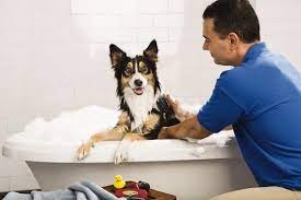
Pet ownership is a huge responsibility and a true joy, but taking care of your furry friends can be a bit overwhelming. Whether you’re a seasoned pet parent or just starting out, PetSmart Tucson is here to help you provide the best care for your pets.
In this comprehensive article, we’ll take a deep dive into everything PetSmart Tucson has to offer, from their wide selection of pet products to their knowledgeable staff and professional services.
Pet Products Galore
PetSmart Tucson is proud to offer an extensive range of pet products to suit every need and budget. From food and toys to grooming supplies and bedding, they have everything you need to keep your pet healthy and happy.
Grooming Services
Keeping your pet looking and feeling their best is important, and PetSmart Tucson’s grooming services can help you do just that. Their experienced groomers are trained to provide a safe and stress-free grooming experience for your pet. They offer a variety of grooming services, including baths, haircuts, and nail trims, so you can choose what’s best for your pet’s unique needs.
Training Classes
PetSmart Tucson believes that every pet deserves to be well-behaved and well-trained, which is why they offer training classes for dogs and cats. Whether you’re looking to teach your pet basic obedience or you’re working on more advanced tricks, PetSmart Tucson has the perfect class for you. Their experienced trainers will guide you and your pet through each lesson, helping you to build a strong bond and create a happier home for everyone.
Adoption Services
PetSmart Tucson is committed to helping pets in need, which is why they partner with local animal shelters and rescue organizations to provide adoption services. If you’re looking to add a new pet to your family, PetSmart Tucson is the perfect place to start. You can meet and play with a variety of adoptable pets, find the perfect match, and provide a loving home to a pet in need.
Friendly and Knowledgeable Staff
At PetSmart Tucson, their staff is passionate about pets and dedicated to helping you provide the best care for your furry friends. They have extensive knowledge about all of their products and services and are always happy to answer any questions you may have. Whether you’re looking for advice on nutrition or need help selecting the perfect toy for your pet, PetSmart Tucson’s friendly and knowledgeable staff is here to help.
Conclusion
PetSmart Tucson is the ultimate destination for all your pet needs. With their wide selection of pet products, grooming services, training classes, adoption services, and friendly and knowledgeable staff, they make it easy to provide the best care for your pets. Whether you’re a seasoned pet parent or just starting out, PetSmart Tucson is here to help you every step of the way.
-

 Dog2 years ago
Dog2 years agoPomeranian Dog Best Bread Information
-

 Dog2 years ago
Dog2 years agoLarge Münsterländer And Its Breed In 2022
-

 Dog2 years ago
Dog2 years agoBlue Heeler Australian Cattle Dog Breed info & Care
-

 PET2 years ago
PET2 years agoHow to choose the best pet boarding house?
-
Hedgehog2 years ago
Hedgehog Top 20 Surprising Curiosities
-

 Axolotl2 years ago
Axolotl2 years agoAxolotl: Top 10 Care Sheet, life & a lot
-

 Turtle2 years ago
Turtle2 years ago4 types of domestic turtles to have at home?
-

 Login7 months ago
Login7 months agoanimal shelters near me


